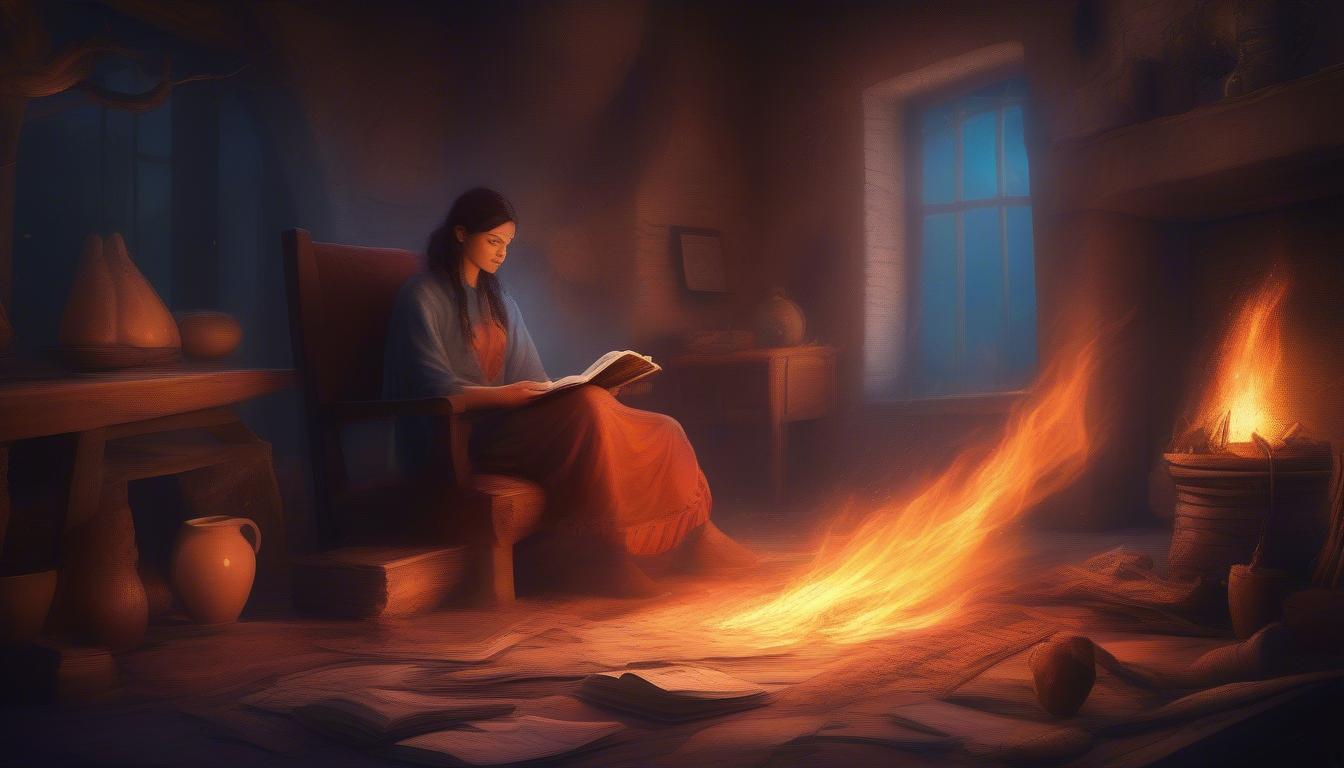
Welcome, budding authors, storytellers, and daydreamers!
Have you ever marveled at how your favorite drama seamlessly entangles your emotions and keeps you glued to the screen or pages until the very end?
Well, my friends, that magnificent journey you experience is all thanks to the magical world of story arcs!
If the term ‘story arc’ sounds as foreign to you as the culinary views of a high-end sushi chef, fear not!
This quirky guide is here to break it down into bite-sized, easily digestible pieces.
So grab your favorite snack and let’s dive into the whimsical waters of compelling narratives and learn how to master those elusive story arcs!
The BEST AI Screenwriting Tool In Hollywood!
Key Takeaways
- A story arc is the framework that guides the progression of a narrative.
- Key components of a well-structured story arc include exposition, rising action, climax, falling action, and resolution.
- Different types of story arcs serve various narrative purposes and can enhance storytelling effectiveness.
- Building tension and resolution within a story arc is crucial for engaging the audience and maintaining interest.
- Avoiding common mistakes in story arc construction can significantly improve narrative quality and coherence.
Understanding What a Story Arc Is
Ah, story arcs!
The magical invisible ropes that tie together a tale and keep readers on the edge of their seats—or cozy in their armchairs with a cup of tea, if that’s their vibe.
But what exactly is a story arc?
Think of it as the roadmap of your narrative journey; it’s what guides your charming characters (or, let’s be real, sometimes downright dysfunctional ones) as they twist and turn through a landscape of conflict and growth.
Essentially, a story arc outlines how the plot evolves over time, ensuring our protagonists don’t just meander aimlessly like a chicken in a parking lot.
From the exhilarating inciting incident that gets everything rolling to the heart-pounding climax (cue the dramatic music!), and finally the resolution where all the loose ends are tied up tighter than a pair of old shoe laces, understanding story arcs is like holding the key to the literary kingdom.
So, if you want readers to throw confetti at the climax of your story instead of snoozing through it, mastering story arcs is an absolute must!
The Components of a Well-Structured Story Arc
Ah, the story arc – the backbone of storytelling so essential that it deserves a name as grand as an ancient hero!
Think of story arcs as the fine pasta in your favorite dish, perfectly al dente and holding everything together while still looking oh-so-delicious.
Now, if you’re a beginner tiptoeing into the wondrous world of storytelling, buckle up, because we’re diving into the delightful components of a well-structured story arc.
First, we have the exposition, which is basically your opening scene: it sets the stage, introduces characters, and lets us know why we should care about that quirky little universe you’re spinning.
Next comes the rising action – oh, this is where the excitement screws decidedly tighter and the plot thickens like a good sauce!
It’s all about building tension, crafting conflicts, and making readers gasp, ‘No, they didn’t just do that!’ You follow it up with the climax, which is the emotional rollercoaster of the entire ride – the point where everything hangs in the balance and you might just throw your hands up in dramatic shock!
Finally, we have the falling action and resolution, where you let those dear characters catch their breath and tidy up the mess they’ve made, leaving the audience with that satisfying ‘aaah’ feeling – like finishing a hearty meal but still pondering what dessert to dive into next.
So there you have it, folks!
Better than a recipe for storytelling success, these components of story arcs will have you weaving tales that dazzle, delight, and keep readers hungry for more!
‘A story should have a beginning, a middle, and an end, but not necessarily in that order.’ – Jean-Luc Godard
Types of Story Arcs and Their Applications
Welcome to the wild, whimsical world of story arcs, where every tale twist takes us on a merry rollercoaster ride of emotions!
Whether you’re writing the next great American novel or penning a simple blog post about your cat’s spectacular day, understanding the different types of story arcs can turn your narrative into a page-turner.
So, what are these delightful story arcs, and how can we unleash their potential?
First up, we have the classic ‘Hero’s Journey,’ which follows our unsuspecting protagonist from their mundane life to extraordinary adventures—let’s face it, who doesn’t love an epic quest?
Then there’s the ‘Three Act Structure,’ with its charming intro, nail-biting conflict, and triumphant resolution, perfect for those who appreciate a sprinkle of tradition.
Feeling experimental?
Dive into the ‘Circular Arc,’ where the story ends right where it began, leaving readers with a profound sense of déjà vu.
And don’t forget the ‘Tragic Arc,’ because sometimes it’s just more fun to break our hearts over a beautifully crafted downfall.
Each of these story arcs serves a purpose, helping writers craft narratives that resonate with readers and keep them turning pages faster than a squirrel on espresso!
So, whether you’re crafting an uplifting romantic comedy or a suspenseful mystery, knowing your story arcs can transform your storytelling prowess from blah to brilliant!
The BEST AI Screenwriting Tool In Hollywood!
Techniques for Building Tension and Resolution
Let’s spill the beans on how to craft those delightful rollercoaster emotions with story arcs that’ll make your readers on the edge of their seats!
First off, we’ve got the classic set-up and pay-off technique—cue the dramatic music, plot twists, and perhaps a villain with a stuffed penguin for a sidekick.
Start by laying the groundwork with compelling introductions and sneaky foreshadowing; after all, who doesn’t love when the author drops little hints like breadcrumbs leading to a surprise party?
Next up, there’s the powerful conflict escalation—this is where things heat up faster than a jalapeño-eating contest!
You want your characters to face increasingly tough challenges.
Maybe your protagonist’s duck that they trained for a reality show gets kidnapped by a rival quacker?
Keep pulling that string of tension until it’s ready to snap!
And of course, we have the glorious climax and resolution, where the rubber meets the road.
Tie those loose ends tighter than a pair of shoelaces at a marathon—decide how the story arcs will converge in a way that leaves readers gasping for air, like they just sprinted up a hill.
Remember, the goal is to create a satisfying conclusion that leaves them feeling like they just finished the best meal of their lives—full, happy, and wanting more!
Common Mistakes to Avoid When Creating Story Arcs
Ah, story arcs!
Those delightful, twisting roller coasters that take characters from point A to point B (and sometimes C, D, and E!) with all the flair of a magician pulling a rabbit out of a hat.
But before you start crafting your literary masterpiece, let’s avoid some common pitfalls that could have your readers raising their eyebrows instead of clapping in delight.
First up, don’t create a story arc that’s flatter than a pancake after a bad flip—ensure there’s a clear beginning, middle, and end; otherwise, readers might wander off faster than a cat when it hears a can opener.
Secondly, avoid the dreaded *info dump*!
You know, the part in the story where you cram every bit of character backstory into a single paragraph?
Like shoving too many marshmallows into hot chocolate; it ruins the magic.
Keep it subtle, sprinkle that backstory throughout your narrative!
Lastly, beware of the plot twist that feels like it was left out in the rain—unexpected is good, but if it’s random or has no foreshadowing, your audience will be scratching their heads instead of gasping in awe.
So, remember, when creating story arcs, aim for intrigue, coherence, and a sprinkle of surprise without derailing your train of thought!








